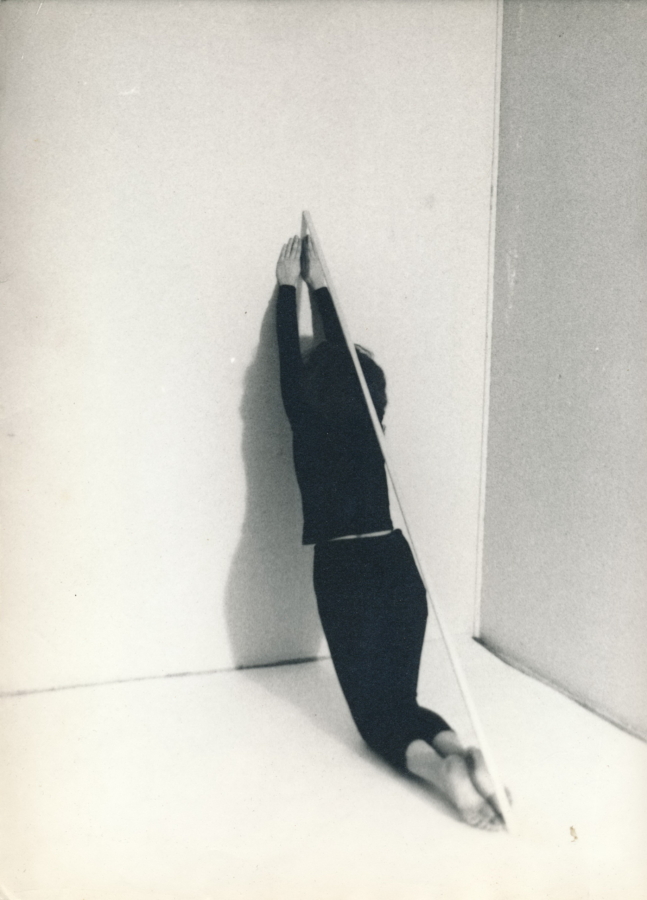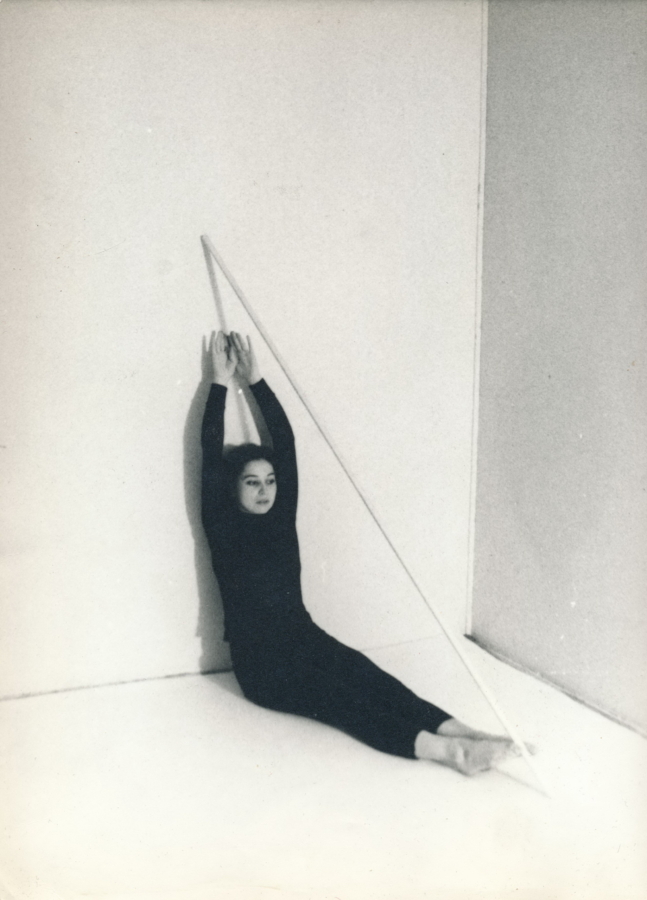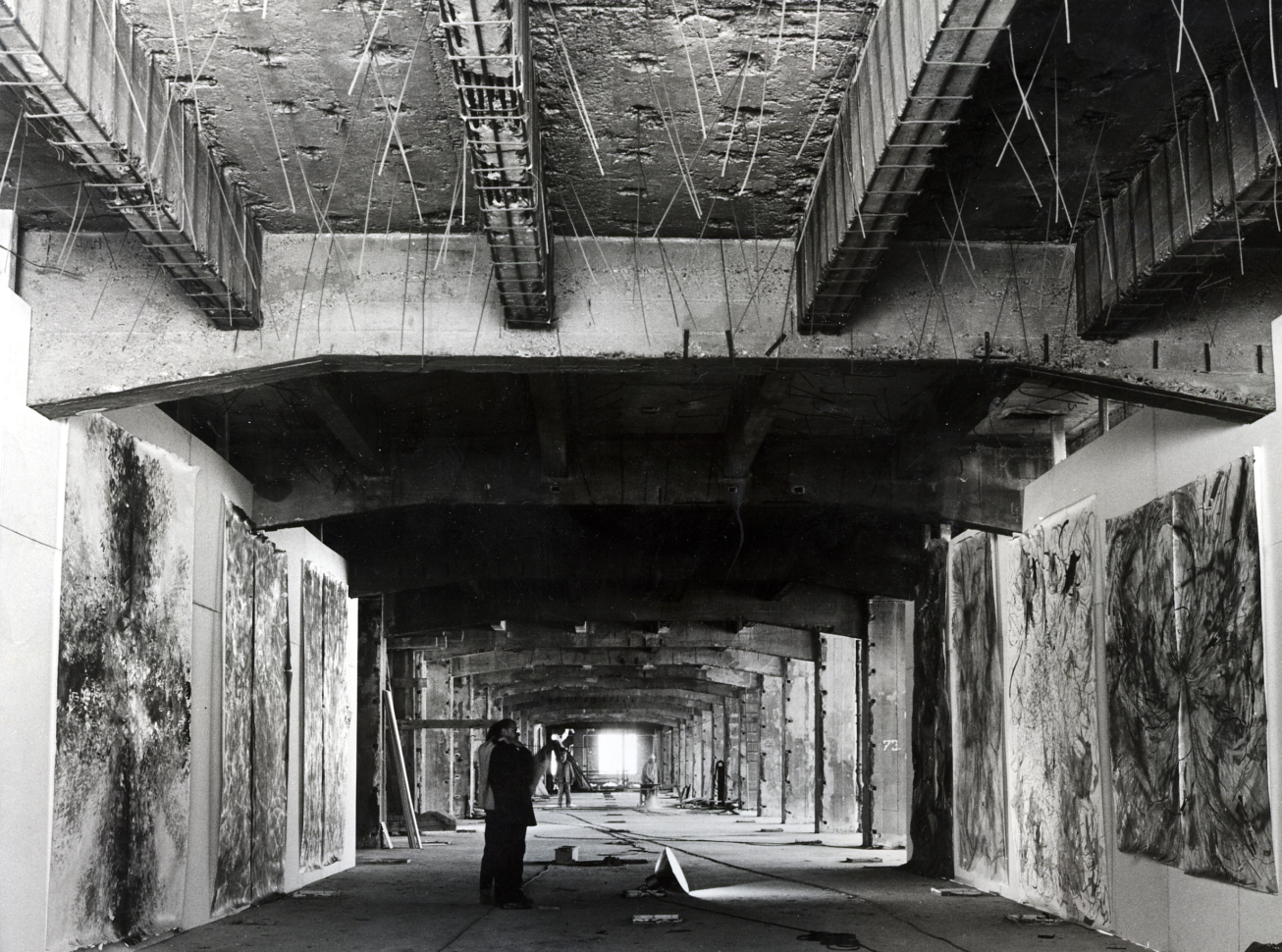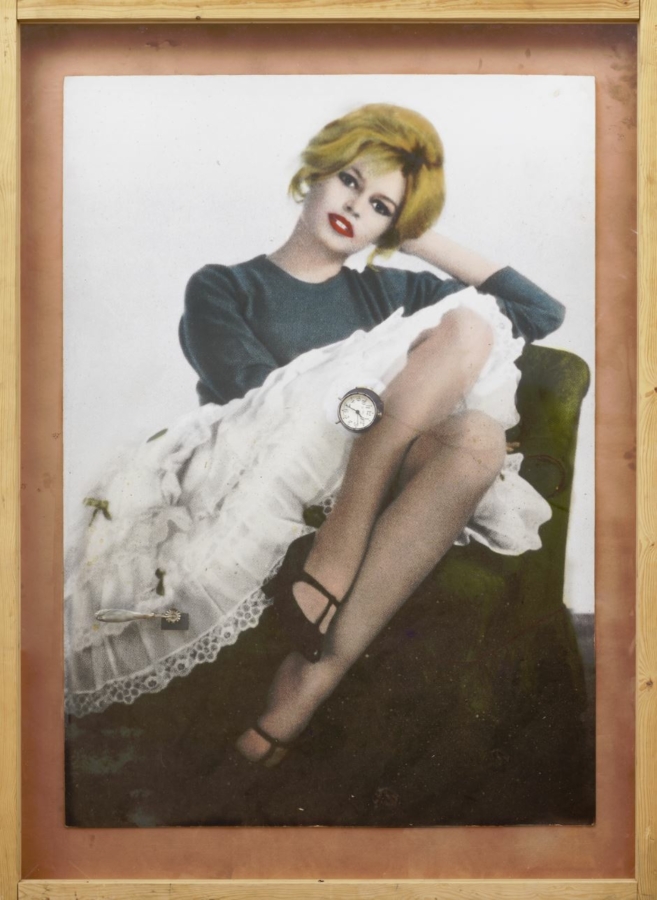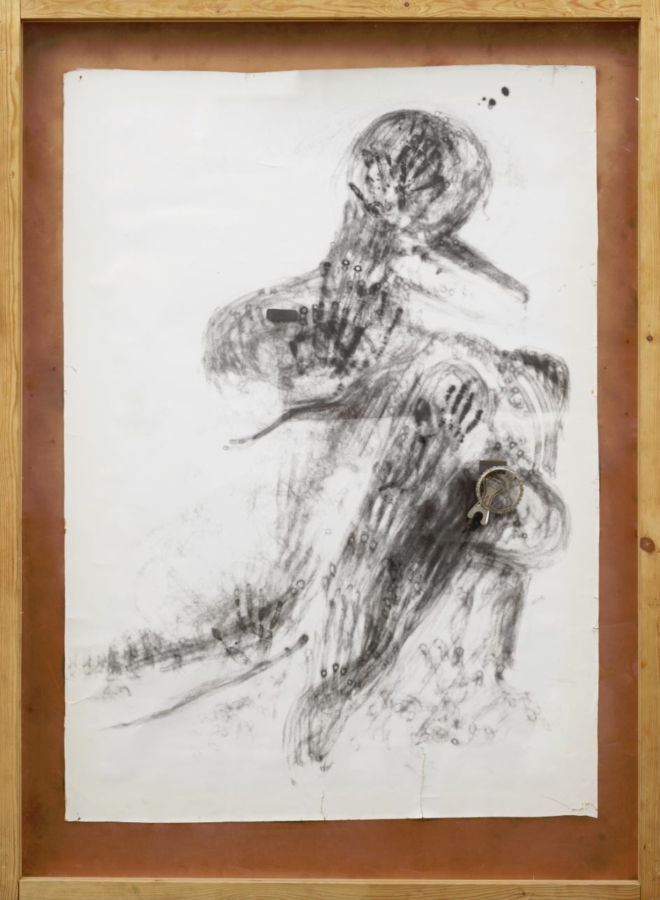Stand Against the Picture as Against a Storm. "It's beautiful to see things I only felt before." Margita Titlová, Pavel Klusák
“The individual rooms themselves decided what to put in them.” This is how Margita Titlová describes the work on her non-chronological retrospective at the Stone Bell House. Which of the exhibited works were not originally intended for the public eye? Where did the lipstick drawings and wedding dresses in her work come from? How are magnetic force and decomposition of the light spectrum related in her work? Inscribing her own shadow and touch onto the world, intuition continuing in technologies: Margita Titlová recaps the fundamental techniques and turning points of her career for Qartal.
Shadow
While still at the academy, at the time when I was seeing these amazing friends, I decided to embark on a personal cleansing. I told myself that I would start developing myself to find my own style. It was clear to me that I had to work with what I knew, with what I had. Well, what was it? My own body and my shadow. Because my body is reflected in the surrounding reality: when it casts a shadow, it is a fundamental imprint on the world. Even if I have nothing else, that’s something to work with. I quietly started to work with this; at the academy they taught rather technical aspects of painting, a completely different world. The photographs I took in different situations and personal events were not originally intended to be exhibited at all: I meant them to be part of my research. And not only photos: I started to draw on my shadow. I projected my shadow on paper, studied it, was drawing onto it. I was studying my reality through artistic means. Where the shadow is multiplied, there I moved. And I photographed it with a self-timer: although my work sometimes had the nature of action, there was no audience to follow it, I did everything in solitude.
Touch
The photos then began to be accompanied by separate touch drawings. In them, I am already modifying the relationship between a human and reality by an artistic process, by abstraction: the red pigment, that is lipstick. Eventually, I didn’t need the shadow anymore. I came to the point that I could do without it; it was no longer necessary for me to see the reality of my reflection in front of me. The actions in which I intervened in the environment, changed the space with my presence, that’s the continuation of working with the shadow for me. To draw pictures on a wall, to dig up the earth: then you leave, as one goes into death, and what remains is a space marked by your previous presence. Did I have anyone to talk to in the early days? Well, all the time. Look, I’m still in the community, the community of artists. I’ve never been a loner.
Trade Fair Palace 1984
When I started to work more expressively, the works asked for large dimensions. It’s important for me to stand against the monumental format as against a storm. Or like when you look at nature in the rain. The painting has to be so big that I can physically enter it: In my performances I studied how the body works in reality, and with monumental paintings I directly continued this. The dimension was mostly the wall of my studio in Petrská Street. A wall or a floor. It couldn’t get any bigger. It was in this situation that I managed to arrange an exhibition for myself at the Trade Fair Palace: unofficial, of course, the palace was all destroyed after the fire, it was a construction site closed to the public. In 1984, nobody had any idea that it would house the National Gallery one day. I needed walls large enough for my big paintings. The site manager, who was on good terms with the cultural underground, made it all possible. He even built some walls especially for my works. They were exhibited there for three days and were seen by many people, some came from as far as Slovakia. That’s what my solo exhibition looked like under the conditions prevailing at that time. I was 26.
Lipsticks
Painting with lipstick: It’s not directly feminist of me, I’m not that kind of a person – but it stems from female experience. When you have experience with make-up, using lipstick, you’ll find out that the pigment in a lipstick is a flawless, high-quality material with which touch drawings can be perfectly made. You can add and subtract red, which implies physicality, the will to live and be beautiful! The length of some of the drawings is four and a half metres: we had to reserve space for them in the large hall at the Stone Bell House.
Kirlian
My brother is a psychotherapist. It was he who told me about the existence of the so-called Kirlian device. The first version was invented by Nikola Tesla and perfected in the 1930s by someone called Semyon Kirlian. It records human touch on photographic paper which is illuminated by small electrical discharges at the point of contact. Apparently, something about the physical and mental state can be read from it and there is speculation as to whether this device can display the glow of the aura. However, I was fascinated by it for another reason. After all the touch drawings, I no longer had to express myself in colour but directly with the imprint of my body! My brother had this machine built for me – isn’t he great? And I started to paint in the darkroom, using myself, the truth – instead of paint – depicting what I was at that very moment. I could leave out all the lipstick and other tools, I touched the paper with this hand and left a mark on it. You can’t fully control the result when you work in the dark, of course.
Bardots
It might seem that the Bardots series is about something completely different, but it’s related. I became interested in why women wear make-up and dress fashionably and what the aesthetics of female beauty is in today’s society. I discovered that it stems from the 1960s, from actresses and films of the time. Their stories said: if you look like the stars in the lead roles, what happened to them will happen to you. You’ll also experience heartwarming stories with a romantic handsome man riding a horse. Movies have really motivated women for years. It’s not just the clean looks, the fashion elements: it’s the story as well. I studied it for some time and created a series of diptychs: one part is a large photograph, for example Brigitte Bardot, and next to it is my abstract portrait of the same person created in the dark. I felt that a good contrast also lies in the fact that I portray a certain feminine artificiality, facade, I do portraits just with my body, with my physical existence: which is exactly what Kirlian’s device allows.
Invisible
I’m always interested in visualizing something hidden that we can’t see. When I find a technology that can reveal it, I immediately go in for it and use it. Magnetic force: you can see its effect but the energy itself of the magnet is invisible. That’s why I used to put magnets in my sculptures. That’s why I installed upright knives that don’t touch anything at the tips: they float upwards, trembling slightly in the air – and you can’t see the force that holds them. I guide the light that surrounds us through glass prisms or reflect it with CDs, compact discs: the white light is transformed and suddenly you can paint with it, project a colour spectrum somewhere. In this case, it is also about capturing a moment, stopping time in constant change. The photographer is standing next to me, we are catching fleeting moments, the light sometimes comes out nicely but it also disappears immediately. I shout at Kiva, the photographer Vladimír Novotný: “Come on! Go ahead! Now!” And then I move and everything changes and Kiva says: “It’s gone.” What attracts me about it? Everything! It’s beautiful to see things that I’ve only felt before. Not that it’s a direct answer to my questions about what life means. It’s more of a shiver than an answer. But through art, I can look at them.
In the Field
When you need to calm down, you close your eyes and figure out how you feel. I used to turn off the light at night, take some red paint and start doing automatic drawing. Someone else might start singing a tune they were making up at the time, I would calm myself down by drawing. Without giving myself an assignment or a question. And suddenly, there was always a sentence to go with the automaticity. Out of the jumble of thoughts, the mess of chemistry inside my head, something would emerge. One of those sentences was: Plant yourself in a field. I liked it so much! It meant renewal to me: plant yourself in the field, you have a chance to grow again! The next sentences I wrote down were: “The deserts are ending” or “Thank you, that’s what I want”. But I knew I couldn’t put those words in the drawings. Finally, I carved them into plexiglass and let them cast shadows on the drawings. This is where my other large-scale drawings stem from. The Plant Yourself in the Field series is painted entirely using earth. I am actually painting the field I am supposed to plant myself in. The Earth is a higher principle. Earth is a material that constantly reminds you: you live in something higher. I understand that the spectrum of colours is not present here but, as a material, earth is extremely important to me. I wrote love letters using earth even on the brides’ white wedding dresses: texts by Franz Kafka, Frida Kahlo, and lyrics of Moravian folk songs.
Thermography
In recent years, I have been working a lot with thermal imaging. It shows you the thermal reality, for example around the human body. So in “thermal imaging paintings” I follow the traces of myself: my head, my breath, my hands placed on the thermal film, but also the heated place where my hands were resting a moment ago and are no longer there. Sometimes I work with a heat torch, with warm wax. I used to use ice to draw a large butterfly on the wall: the drawing is cool blue in thermography, me myself, on the other hand, standing in front of it, I am hot red, on the other side of the spectrum… It is about the same fascination of mine, taking place here: the revelation of the invisible. The shadow, the light, the imprint of myself on the environment, the movement across the boundary from the material world to the revealed imagination: in fact, it has been going round and round and returning regularly in my work for years. At the Stone Bell House, these years find themselves collected in one place, or at least some of the directions my work has been moving in over the past forty years.
Margita Titlová: Vertical Purple
15 February – 14 May 2023, Stone Bell House Curator: Magdalena Juříková
Architect of the exhibition: Miroslav Jiřele

